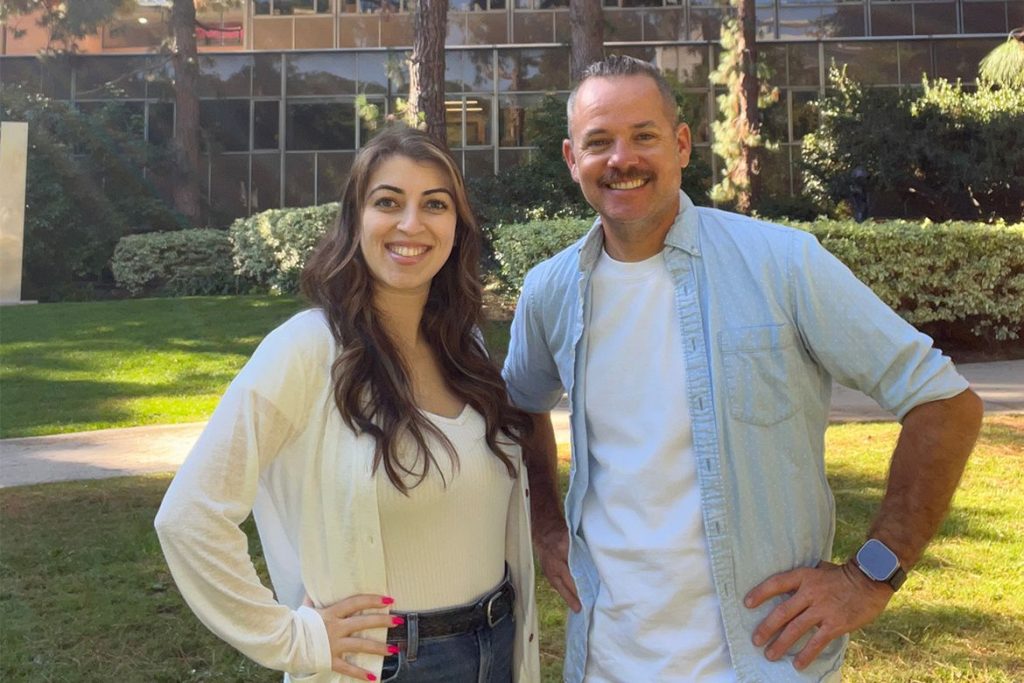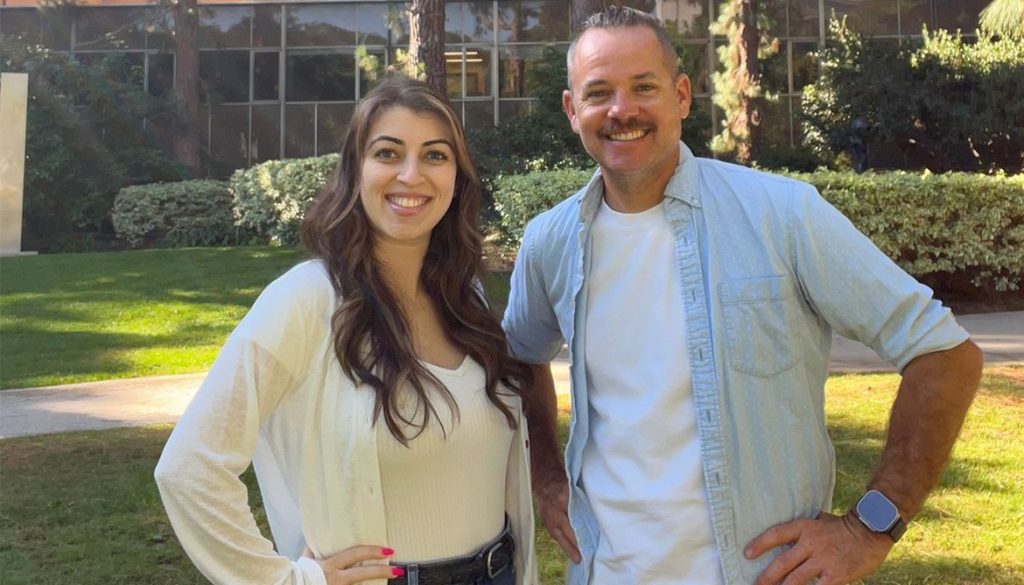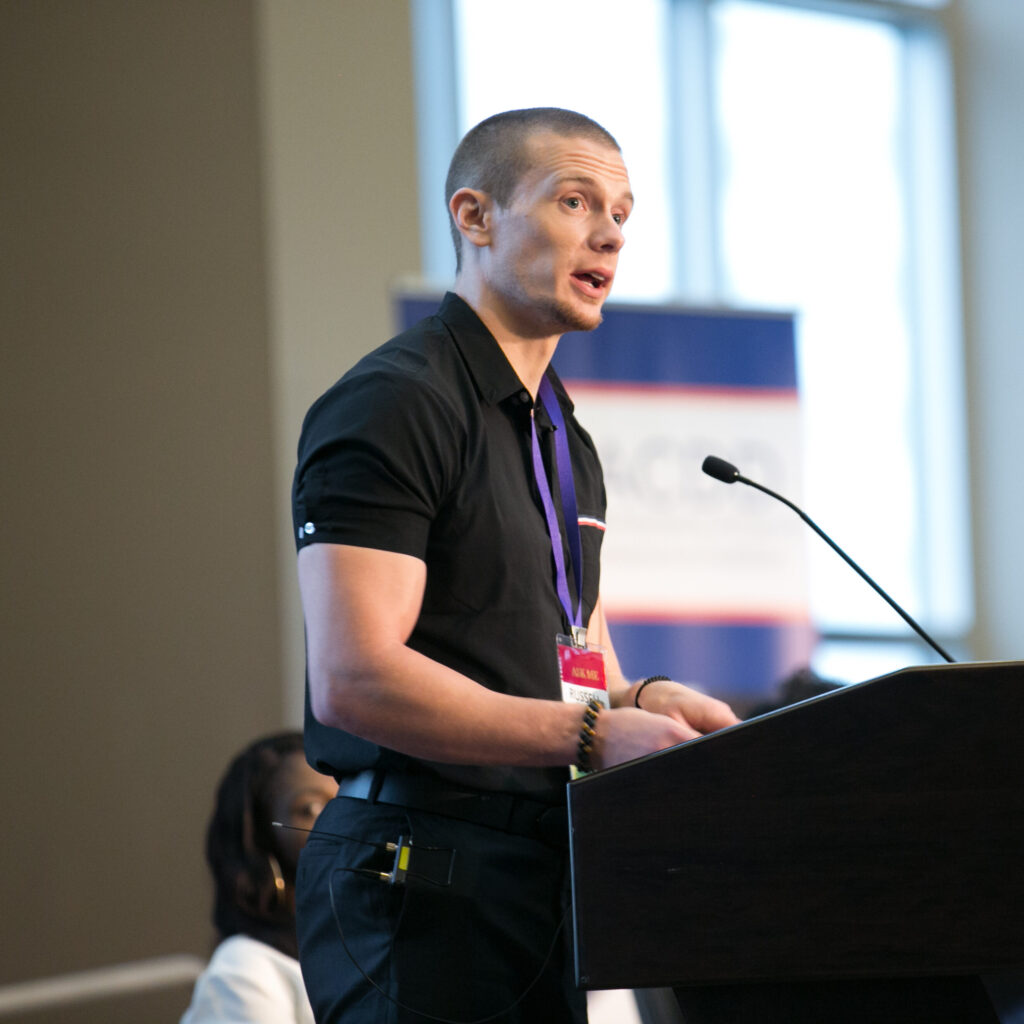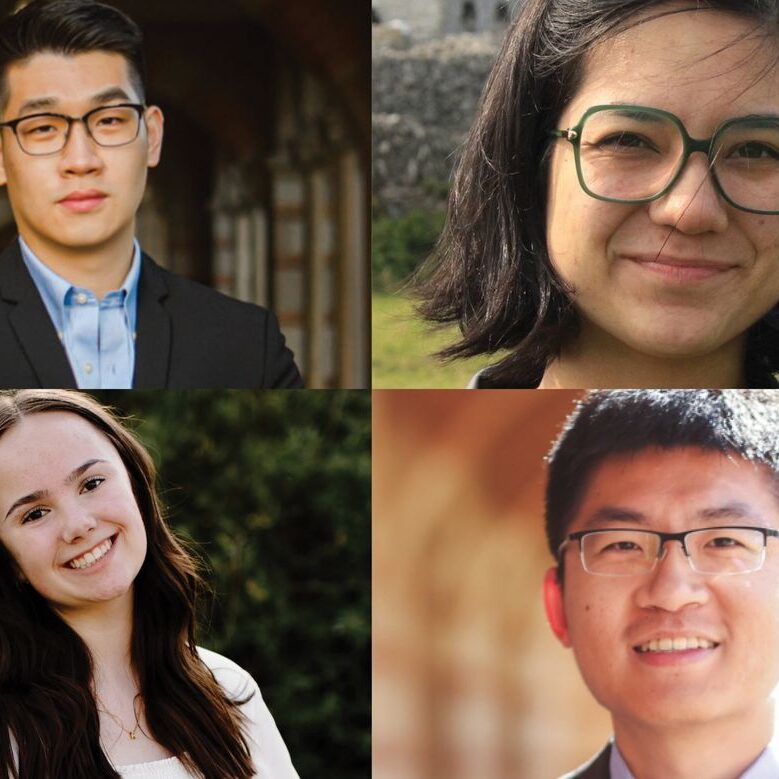Teaching ASL at UCLA distinguishes Benjamin Lewis and Mariam Janvelyan — and their friendship

“One thing I’d like to say to all hearing people: Never ask a Deaf person if they can read lips,” Benjamin Lewis signed, with Mariam Janvelyan interpreting. “We’d appreciate it if you learn a few basic signs, but let Deaf people lead the conversation. We know how to navigate the hearing world.”
Even the greatest partnerships can get off to a rocky start.
About 10 years ago, when linguistics and psychology major Mariam Janvelyan wanted to enroll in UCLA’s already full American Sign Language course, she emailed its brand-new instructor to ask for an override.
“I said no, absolutely not, and rejected her,” Benjamin Lewis signed, with Janvelyan acting as an interpreter in a joint interview. “And apparently it was on her birthday, too. Let the record show: worst present ever.”
Luckily for them both, Janvelyan made it into the class about a year later and became not only one of Lewis’ star students, but eventually his professional colleague after she graduated. Today, Lewis, who is deaf, is UCLA’s only ASL lecturer and Janvelyan is UCLA’s only ASL interpreter, both in the department of linguistics — and together, they’ve developed an impressive course of study in close collaboration.
“In other disciplines, there might be one class with seven or eight sections, each with its own TA. For ASL here, it’s literally just us,” Janvelyan said. “We go through every single detail together and are very much in sync. It definitely helps that we’re friends, too.”
“I think Mariam was deaf in a past life and just happens to be hearing now. To be fluent in both languages is very difficult, but you also have to have a great attitude about the Deaf community,” Lewis said. “Unfortunately, a lot of times, hearing people see deaf people and react, ‘I’m so sorry. You need help. You need to be fixed.’ Mariam has never had that attitude; she always wanted to preserve ASL and grow within the Deaf community.”
Surprisingly, Janvelyan had never taken an ASL course before Lewis’, although her interest had initially been piqued in childhood, when she watched her mother teach herself the ASL alphabet to communicate with a deaf client.
“Everything I know about ASL and how deaf people experience the world is thanks to Ben. He gave me the courage to enter this community and opened up this new world to me,” she said. “I really needed the knowledge he gave and the confidence he instilled in me.”
Her curiosity and enthusiasm dovetailed perfectly with Lewis’ passion for teaching.
“I grew up in a very strong Deaf family, immersed in the Deaf community, attending a Deaf school and college, so in a way, I have always experienced the world from a certain bubble,” he said. “It’s been really nice to have gotten Mariam’s insight into how hearing people approach things from a hearing perspective, and I think we learn from each other every day.”
This reciprocal, immersive approach is key to how Lewis and Janvelyan work in the classroom. Memorizing the language will never result in fluency, they advise; instead, it’s crucial for students to meet native signers and get involved in the broader Deaf community, especially since there can be so many differences in how people sign.
“People from the East and West sign differently. Men and women sign differently. Older people and younger people sign differently,” Lewis said. “I want hearing students to be exposed to the diversity and richness of our community, and I hope that one day UCLA will hire more ASL instructors who can help make this even more possible.”
Unlike courses in other areas of study that can be held in large lecture halls, ASL teaching and learning require a smaller classroom setting. Seated in a semicircle, students, interpreter and instructor alike must interact closely as the class communicates — and this more intimate environment often leads to deeper and more lasting relationships.
“In our courses, everyone becomes friends. We go out to Deaf events together, we practice outside of class, we get really close,” Janvelyan said. “One thing that makes ASL at UCLA so unique is that it fosters such special relationships, between students and with us, too.”
When he applied for the job at UCLA, Lewis wasn’t optimistic about his chances. Although he had grown up in San Francisco, he was currently finishing graduate school across the country in Washington, D.C., and he knew how competitive the posting would be.
“Honestly, when I got the offer in 2012, I had a second where I wanted to ask if they were asking the wrong person,” Lewis said with a laugh. “I was so thrilled that, even though they only offered a 30% appointment, I took the risk. It’s been more than a decade, and UCLA decided to keep me with a full-time appointment — and I couldn’t be happier to be here, building something really special.”
A lot has changed since Lewis first arrived at UCLA, including disability studies becoming a major last year, but one thing has not: Student demand for ASL courses still far outpaces the current resources.
“Fortunately and unfortunately, my ASL classes always fill up within minutes. I wish we could offer more seats, but we have to limit it due to the nature of the course,” Lewis said. “I always tell students who want to get in not to give up, and to look at Mariam’s example. She couldn’t get in at first either, and when she did, she didn’t know anything about ASL that first day. And look at her now.”
Seeing learners deepen their interest in ASL and the Deaf community always inspires both Janvelyan and Lewis, whether it’s alumni choosing to further their study at Gallaudet University — Lewis’ alma mater — or current students sharing the experiences they’ve had using ASL to converse with strangers at a local Starbucks. The pair’s hope is to continue expanding the program and its ripple effect.
“Over our time together, I’ve seen UCLA get much better about acknowledging deaf students, faculty and staff, but it goes beyond that. We’ve seen students in general change their mentality about how they think about being deaf and about deaf people,” Janvelyan said. “Nowadays, there’s less focus on stigma and more on inclusion, accessibility and awareness. Learning ASL has changed a lot of students’ career paths.”



